Abstract
OBJECTIVES: To report on the extent and nature of acute MDMA (ecstasy) related problems presenting to a large London hospital's accident and emergency (A&E) department. METHOD: The computerised attendance records for all patients attending the A&E department over a 15 month period were retrospectively screened. Potential cases thus identified had their case notes systematically reviewed to confirm the history of MDMA use and to extract other relevant data. RESULTS: Forty eight consecutive MDMA related cases were identified. All were in the 15-30 year age group with the majority presenting in the early hours at weekends and having consumed the drug at a night club. The mean number of tablets consumed was two and almost 40% had taken MDMA before. Polydrug use was common with half of the sample having concurrently taken another illicit substance--most commonly other stimulants (amphetamines and cocaine). A wide range of adverse clinical features was found. The most common symptoms were vague and non-specific such as feeling strange or unwell, however many patients had collapsed or lost consciousness. The most common signs elicited were related to sympathetic overactivity, agitation/disturbed behaviour, and increased temperature. The more serious complications of delirium, seizures, and profound unconsciousness (coma) were commoner when MDMA was used in combination with other substances. CONCLUSIONS: For young adults presenting late at night at weekends and exhibiting symptoms of sympathetic overactivity, disturbed behaviour, and increased temperature ("Saturday night fever") the use of stimulant dance drugs especially MDMA should be suspected. As MDMA use does not appear to occur in isolation, the clinical picture is likely to be complicated by multiple rather than single drug ingestion. This poses increased diagnostic and management challenges for A&E staff who typically represent the front line response to dance drug related problems.
Full text
PDF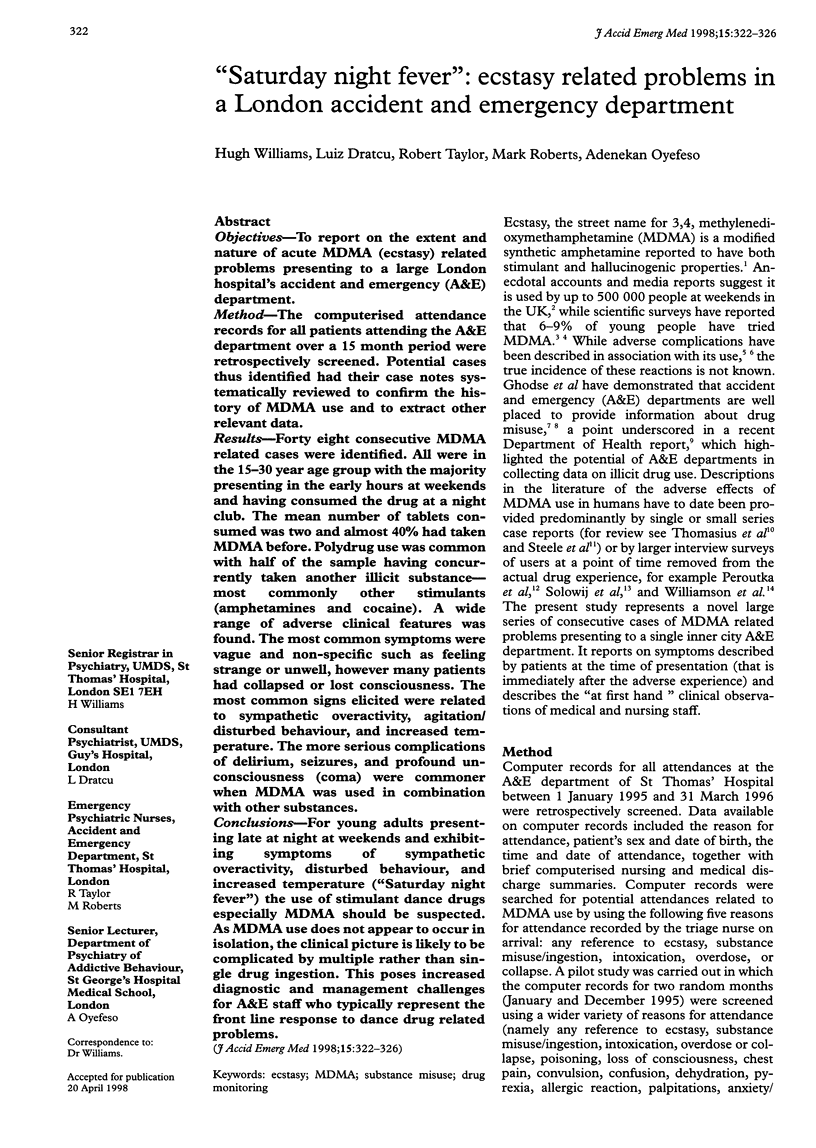
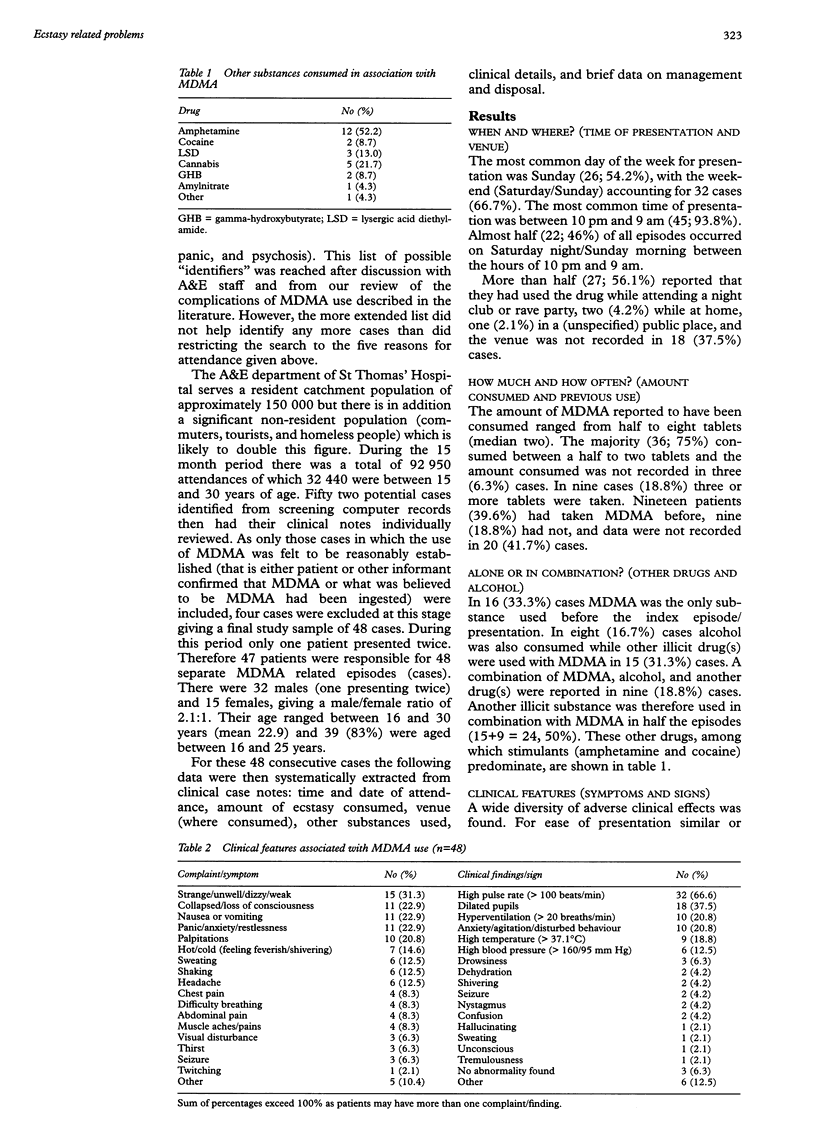
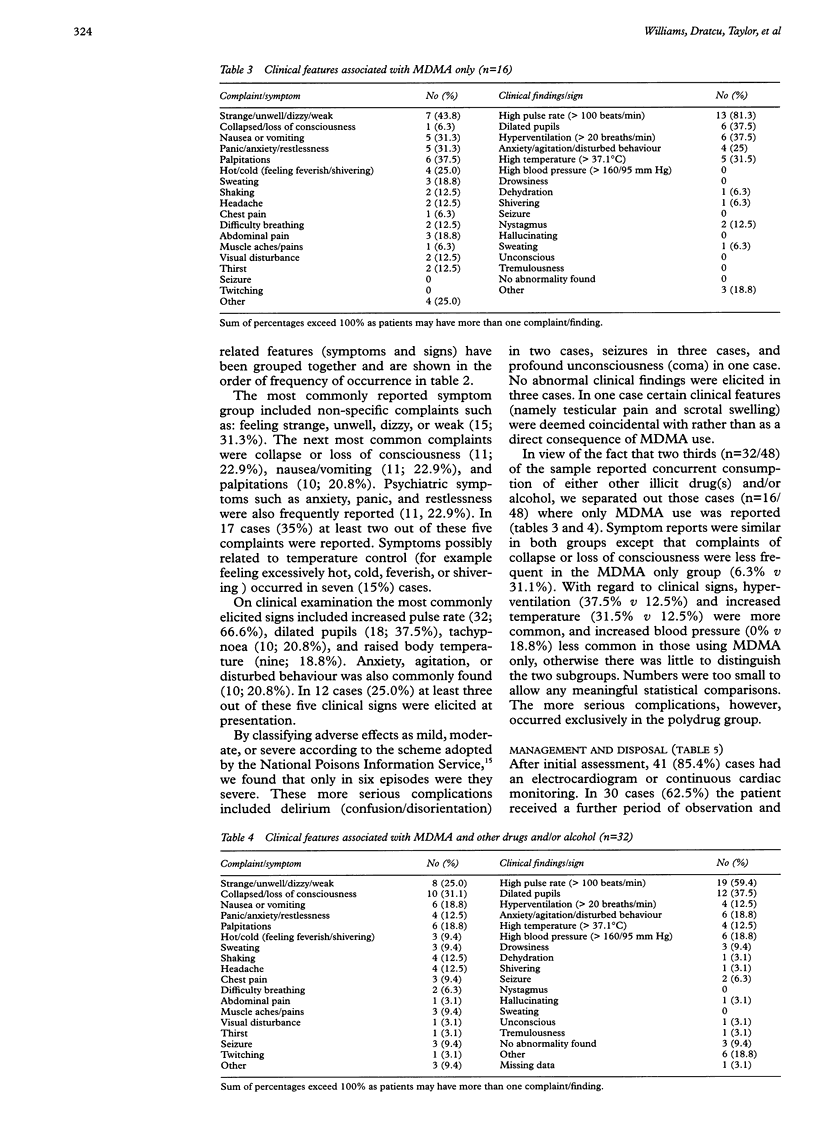
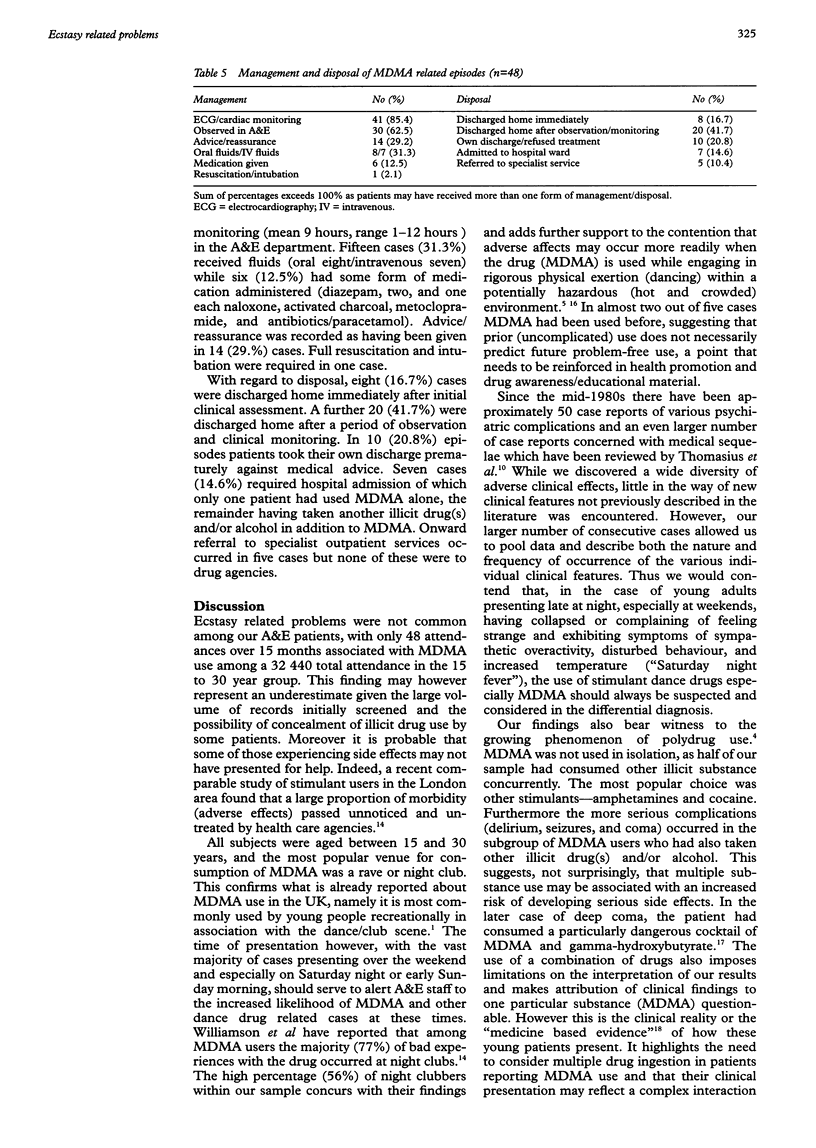
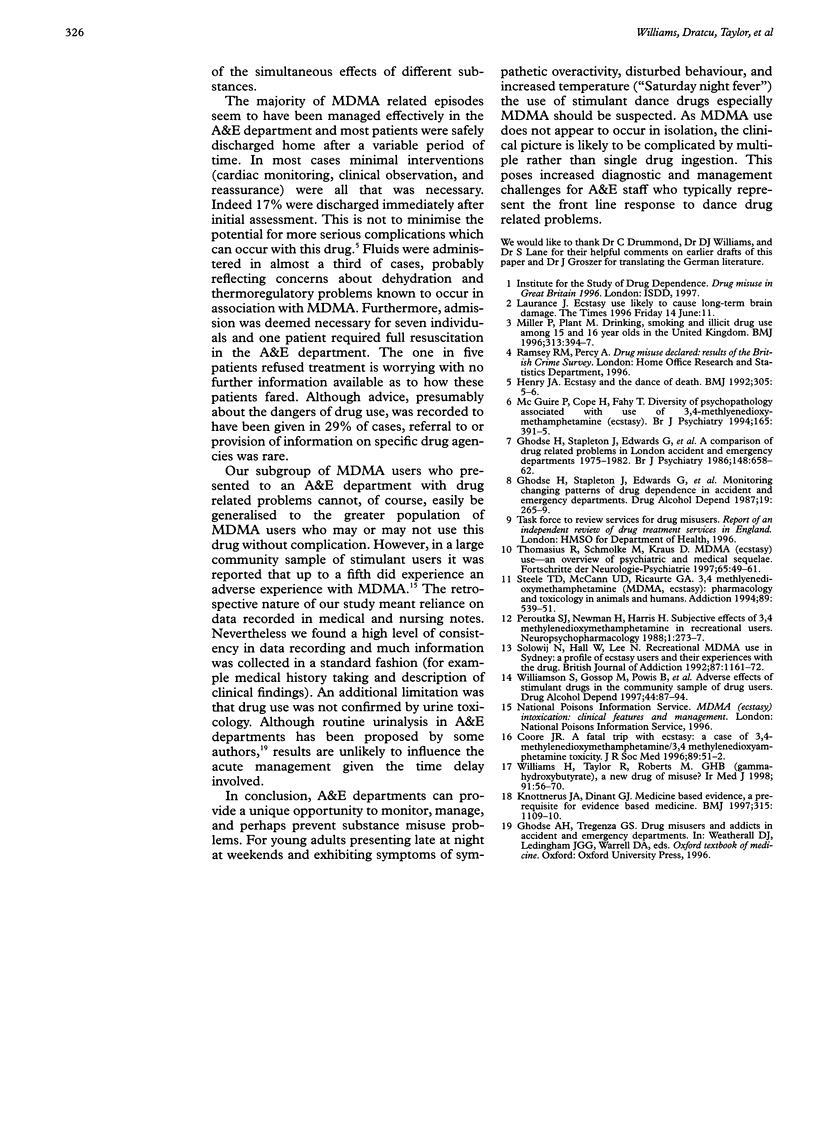
Selected References
These references are in PubMed. This may not be the complete list of references from this article.
- Ghodse A. H., Stapleton J., Edwards G., Edeh J. Monitoring changing patterns of drug dependence in accident and emergency departments. Drug Alcohol Depend. 1987 May;19(3):265–269. doi: 10.1016/0376-8716(87)90046-9. [DOI] [PubMed] [Google Scholar]
- Ghodse H., Stapleton J., Edwards G., Bewley T., Al-Samarrai M. A comparison of drug-related problems in London Accident and Emergency Departments 1975-1982. Br J Psychiatry. 1986 Jun;148:658–662. doi: 10.1192/bjp.148.6.658. [DOI] [PubMed] [Google Scholar]
- Henry J. A. Ecstasy and the dance of death. BMJ. 1992 Jul 4;305(6844):5–6. doi: 10.1136/bmj.305.6844.5. [DOI] [PMC free article] [PubMed] [Google Scholar]
- Knottnerus J. A., Dinant G. J. Medicine based evidence, a prerequisite for evidence based medicine. BMJ. 1997 Nov 1;315(7116):1109–1110. doi: 10.1136/bmj.315.7116.1109. [DOI] [PMC free article] [PubMed] [Google Scholar]
- McGuire P. K., Cope H., Fahy T. A. Diversity of psychopathology associated with use of 3,4-methylenedioxymethamphetamine ('Ecstasy') Br J Psychiatry. 1994 Sep;165(3):391–395. doi: 10.1192/bjp.165.3.391. [DOI] [PubMed] [Google Scholar]
- Miller P. M., Plant M. Drinking, smoking, and illicit drug use among 15 and 16 year olds in the United Kingdom. BMJ. 1996 Aug 17;313(7054):394–397. doi: 10.1136/bmj.313.7054.394. [DOI] [PMC free article] [PubMed] [Google Scholar]
- Peroutka S. J., Newman H., Harris H. Subjective effects of 3,4-methylenedioxymethamphetamine in recreational users. Neuropsychopharmacology. 1988 Dec;1(4):273–277. [PubMed] [Google Scholar]
- Solowij N., Hall W., Lee N. Recreational MDMA use in Sydney: a profile of 'Ecstacy' users and their experiences with the drug. Br J Addict. 1992 Aug;87(8):1161–1172. doi: 10.1111/j.1360-0443.1992.tb02003.x. [DOI] [PubMed] [Google Scholar]
- Steele T. D., McCann U. D., Ricaurte G. A. 3,4-Methylenedioxymethamphetamine (MDMA, "Ecstasy"): pharmacology and toxicology in animals and humans. Addiction. 1994 May;89(5):539–551. doi: 10.1111/j.1360-0443.1994.tb03330.x. [DOI] [PubMed] [Google Scholar]
- Williams H., Taylor R., Roberts M. Gamma-hydroxybutyrate (GHB): a new drug of misuse. Ir Med J. 1998 Mar-Apr;91(2):56–57. [PubMed] [Google Scholar]
- Williamson S., Gossop M., Powis B., Griffiths P., Fountain J., Strang J. Adverse effects of stimulant drugs in a community sample of drug users. Drug Alcohol Depend. 1997 Mar 14;44(2-3):87–94. doi: 10.1016/s0376-8716(96)01324-5. [DOI] [PubMed] [Google Scholar]


